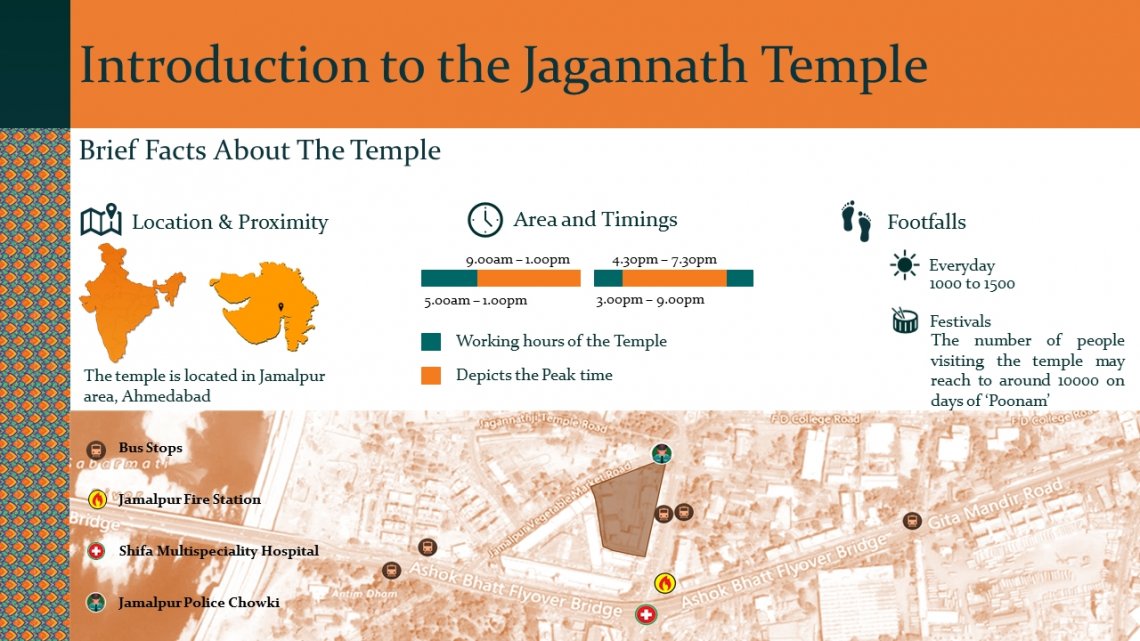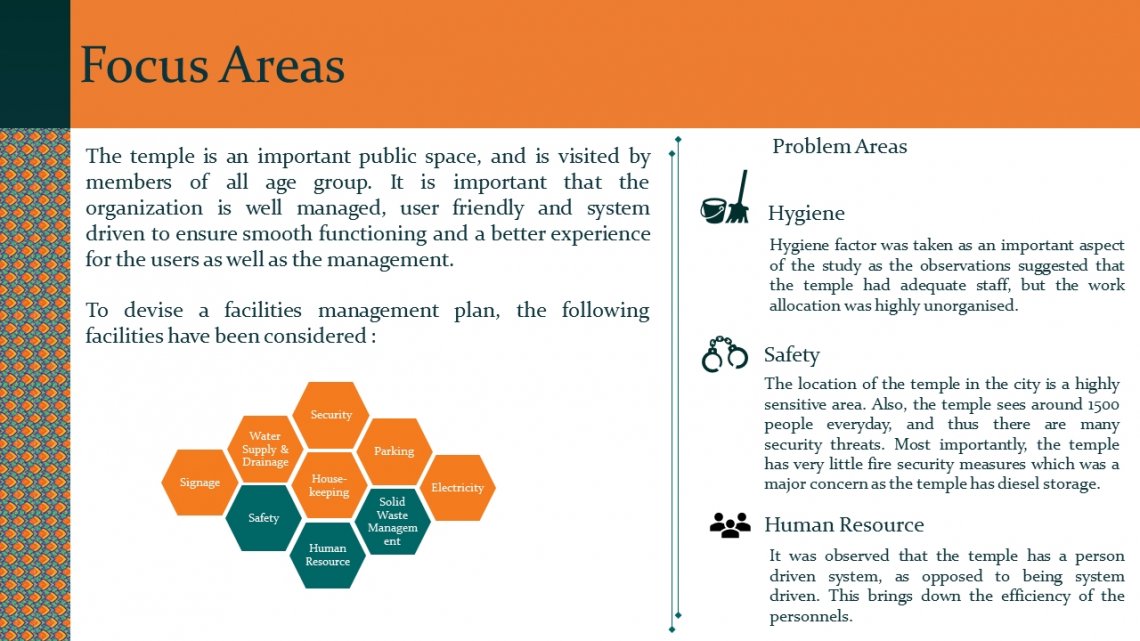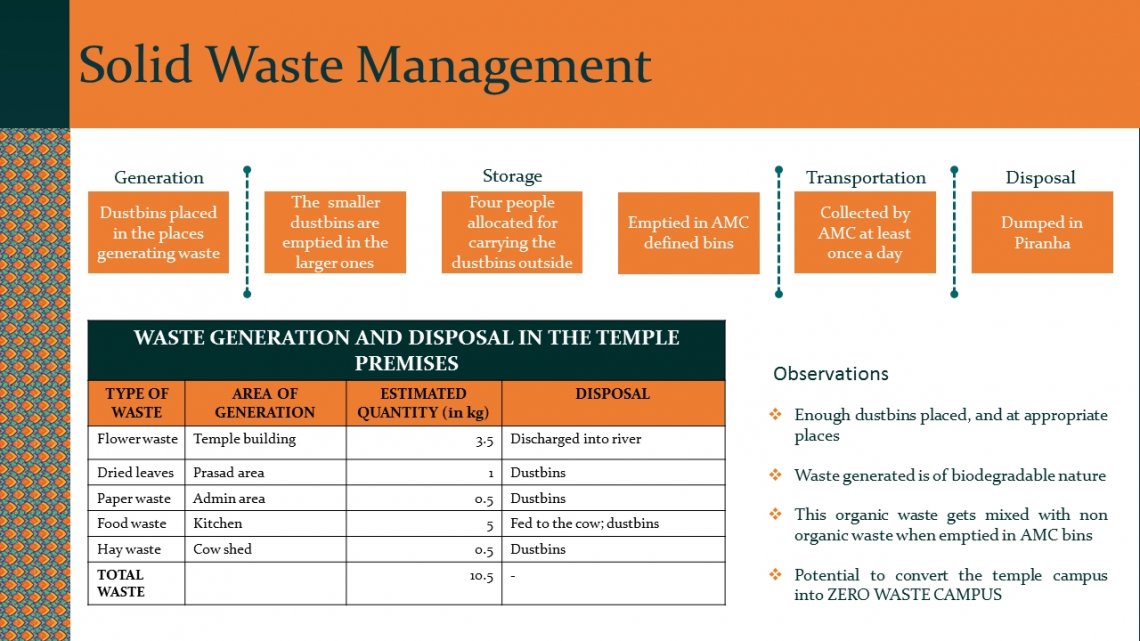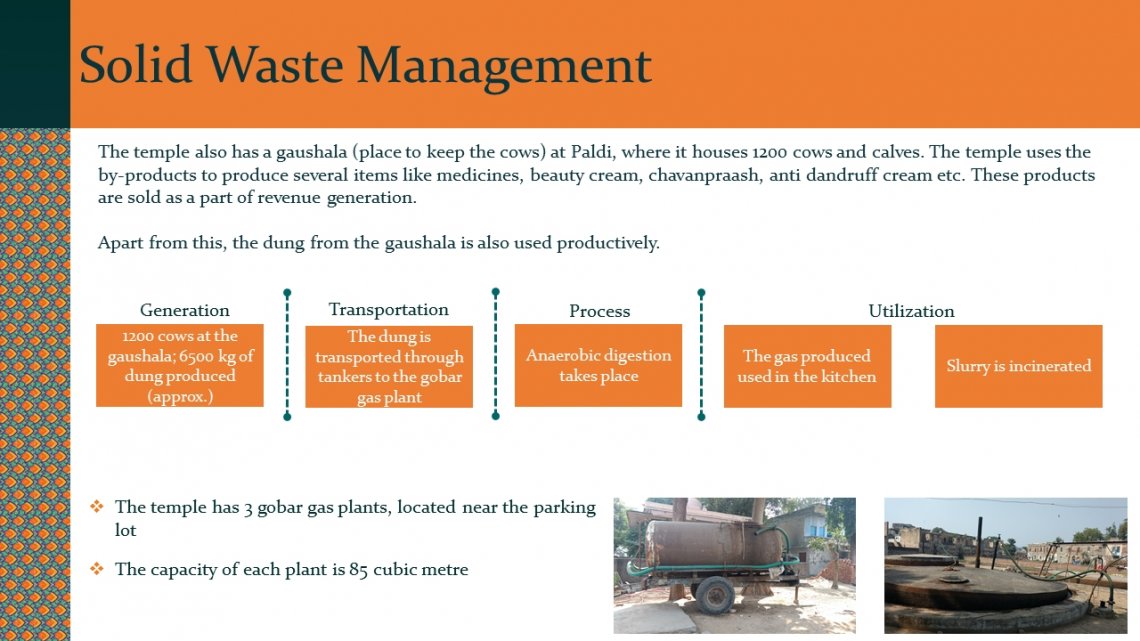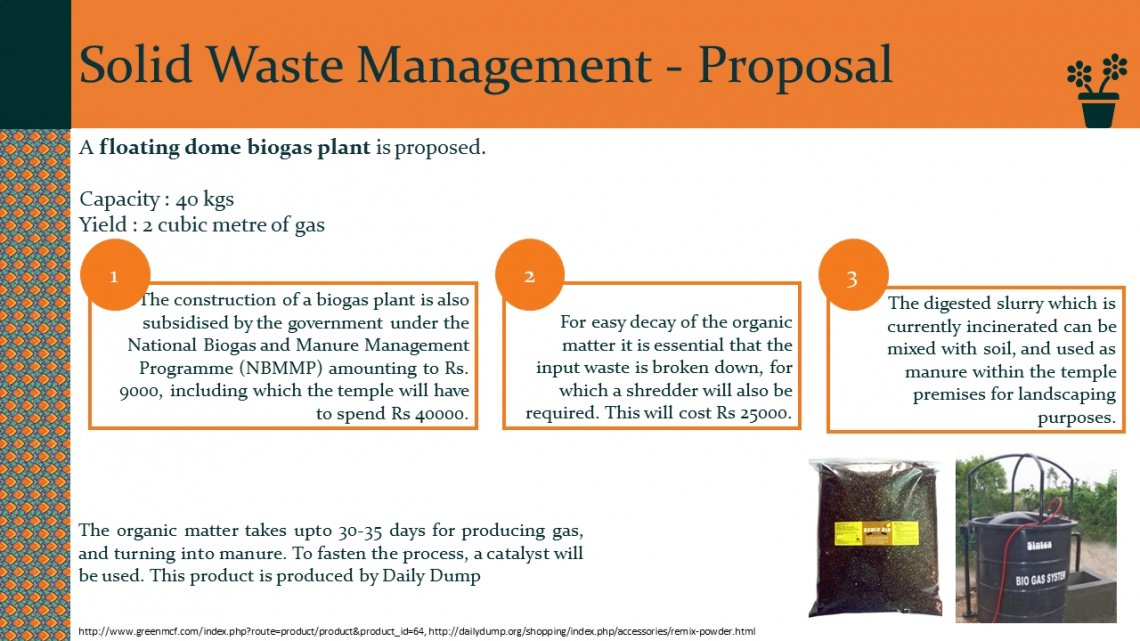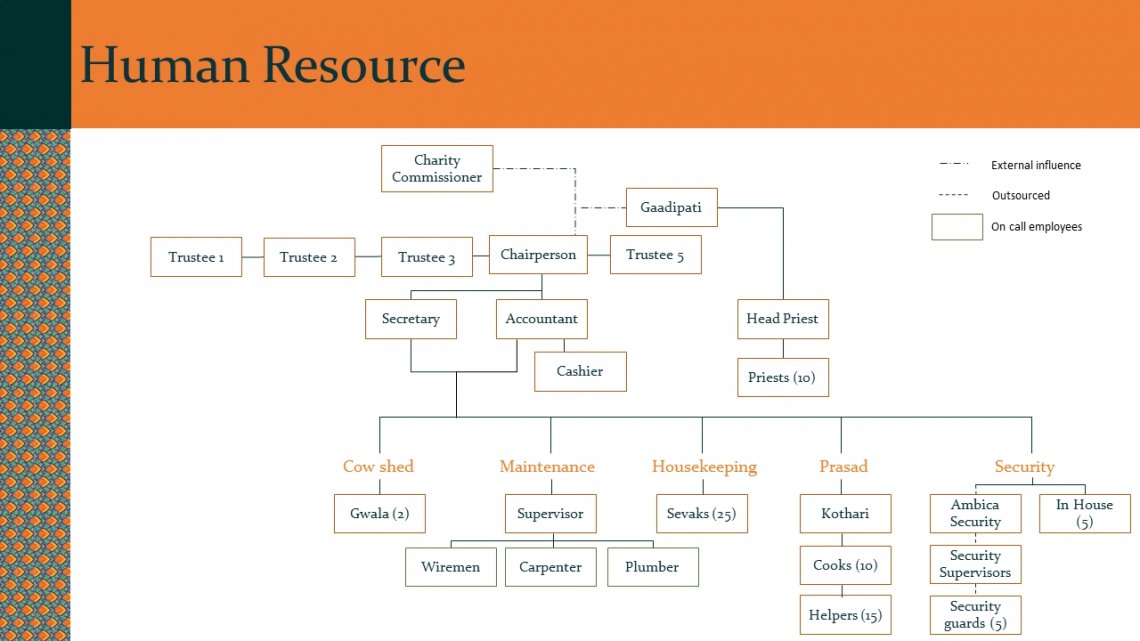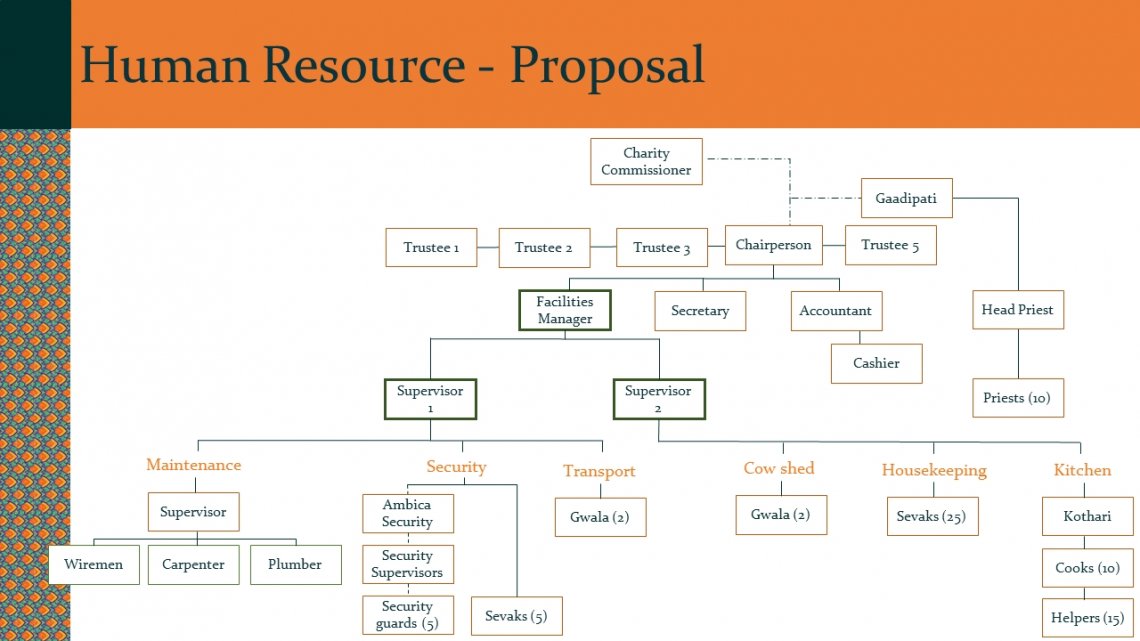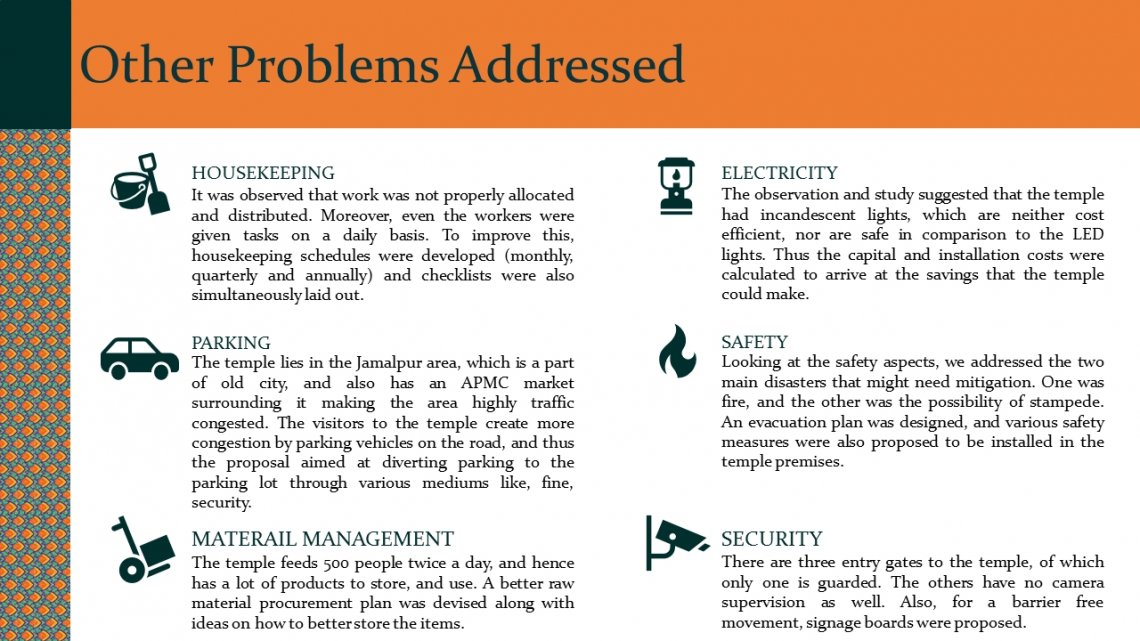Your browser is out-of-date!
For a richer surfing experience on our website, please update your browser. Update my browser now!
For a richer surfing experience on our website, please update your browser. Update my browser now!
Facilities Management is aimed at developing a particular urban area in such a way that it serves the users, and the managers in a better manner, but keeps intact the inherent identity of that particular organisation. It should also ensure that the growth is not organisation specific, rather the focus should be on sustainable development. This studio focused on understanding the backhand operations of one of the most used structures of the built environment, Temples. We have tried to offer a better experience for the users and the owners, while maintaining the sanctity of the place.

